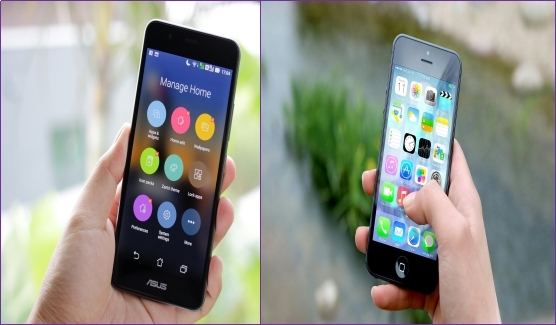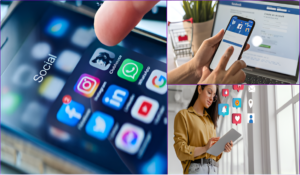
Switching from Android to iPhone can be an exciting experience, but one of the first hurdles you’ll face is transferring your data—contacts, photos, apps, and other important information—from your old Android device to your shiny new iPhone.
Fortunately, Apple has made this process easier than ever with a variety of tools and methods that allow for smooth data migration. In this ultimate guide, we’ll walk you through the steps to transfer your essential data from Android to iPhone seamlessly.
1. Prepare Your Devices
Before you begin the transfer process, make sure both your Android device and iPhone are fully charged, and that you have access to a stable Wi-Fi network. You’ll also want to back up your Android device to ensure no data is lost during the transfer process.
Steps to back up your Android phone:
– Go to Settings> Accounts and Backup > Backup and Restore.
– Enable Back up my data to sync your contacts, apps, and other important information to Google.
– You can also back up photos and videos using Google Photos or another cloud service.
2. Use the Move to iOS App
Apple’s Move to iOS app is the easiest and most reliable way to transfer data from Android to iPhone. This app transfers your contacts, message history, photos, videos, web bookmarks, calendars, and apps from your Android phone to your new iPhone. Here’s how to use it:
Step-by-Step Instructions:
1. Install the Move to iOS App: On your Android phone, download the Move to iOS app from the Google Play Store.
2. Set Up Your iPhone: Begin setting up your new iPhone, and when you reach the “Apps & Data” screen, select the Move Data from Android option.
3. Connect Your Devices: Open the Move to iOS app on your Android phone. You’ll be asked to enter a 6-10 digit code displayed on your iPhone. Enter the code to establish a connection between the two devices.
4. Choose What to Transfer: After the devices are connected, you’ll be prompted to select what you want to transfer. You can choose contacts, message history, photos, videos, web bookmarks, apps, and calendars.
5. Start the Transfer: Once you’ve selected the data you want to transfer, tap Next to start the process. The transfer time will depend on the amount of data you’re moving, so it may take some time.
6. Finish Setup on iPhone: After the transfer is complete, finish setting up your iPhone. You may need to log into your Google account and reconfigure certain apps.
Note: Move to iOS works well for most data, but not all apps will transfer, and you may need to manually reinstall certain apps from the App Store after the transfer.
3. Manually Transfer Photos and Videos
While the Move to iOS app handles most data types, photos and videos often require an additional step. If you have a large photo library, you can transfer it manually using Google Photos or iCloud.
Using Google Photos:
1. Back up Your Photos on Android: If you haven’t already, install and set up Google Photos on your Android device. Ensure your photos and videos are backed up to the cloud.
2. Install Google Photos on iPhone: Download the Google Photos app on your iPhone from the App Store.
3. Sign in to Google Photos: Log into the app using the same Google account you used on your Android device.
4. Access Your Photos: All your backed-up photos and videos should now be accessible on your iPhone. You can choose to keep them in the cloud or download them for offline access.
Using iCloud:
Alternatively, you can upload your photos and videos to iCloud and then sync them to your iPhone.
1. Back Up Photos to iCloud: On your Android device, transfer your photos to your computer. Then, use iCloud.com to upload your photos to your iCloud account.
2. Sync with iPhone: On your iPhone, make sure iCloud Photos is enabled by going to Settings > [your name] > iCloud> Photos, then turn on iCloud Photos. Your photos will begin syncing to your iPhone.
4. Transfer Contacts
Your contacts are one of the most important pieces of data to transfer when switching phones. There are several ways to transfer contacts from Android to iPhone, but the simplest way is through Google Sync.
Using Google Sync:
1. Ensure Google Contacts Sync is Enabled: On your Android phone, go to Settings > Accounts > Google. Make sure Contacts is checked for sync.
2. Log into Your Google Account on iPhone: On your iPhone, go to Settings > Mail > Accounts > Add Account > Google. Enter your Google account credentials.
3. Sync Contacts: Once your Google account is added, make sure the Contacts toggle is switched on. Your Android contacts will automatically sync with your iPhone’s Contacts app.
Alternative Method: SIM Card Transfer
If you only need to transfer a small number of contacts, you can export them from your Android phone to your SIM card and then insert the SIM card into your iPhone. However, this method is less reliable for large contact lists and may not include all contact details.
5. Reinstall Your Apps
Unfortunately, Android apps cannot be directly transferred to iOS, but you can reinstall your apps from the App Store. Here’s how to quickly get your favorite apps onto your new iPhone:
1. Use the Move to iOS App: During the data transfer, the Move to iOS app will list apps that are available on iOS, and you can choose to download them. However, not all Android apps have iOS counterparts.
2. Manually Download Apps: Open the App Store on your iPhone and search for your most-used apps. If you’ve purchased any apps on Android that are also available on iOS, you can often download them again for free with the same Apple ID.
3. Use Third-Party App Management: Some third-party apps like AnyTrans or iMazing allow for more advanced app transfers, though these services may require a computer.
6. Transfer Music and Other Media
For music, movies, and other media, you have a few options depending on your current setup.
– Music: If you use Spotify, Apple Music, or any other cloud-based music service, simply install the corresponding app on your iPhone and log in. Your playlists and music will be available to stream.
– iTunes: If you have a music collection stored locally on your computer via iTunes, you can transfer your music to your iPhone via iTunes or the Apple Music app.
7. Transfer Text Messages
Moving text messages from Android to iPhone is a bit tricky, and Apple’s Move to iOS app may not always fully transfer all message history. However, there are third-party tools available, like AnyTrans and MobileTrans, that can help with SMS and MMS transfers between Android and iPhone.
Conclusion
Transferring data from Android to iPhone may seem intimidating at first, but with the right tools and a little patience, you can quickly get all your important data—contacts, photos, apps, and more—onto your new device. Whether you use Apple’s Move to iOS app, Google Photos, iCloud, or manual methods, the process is straightforward and manageable. By following this guide, you’ll be able to enjoy your new iPhone without losing any of the data that’s important to you. Happy switching!
For featuring, advertising and content publication contact Xylose Magazine on WhatsApp – 0574170347 / Email – xylosemag@gmail.com


